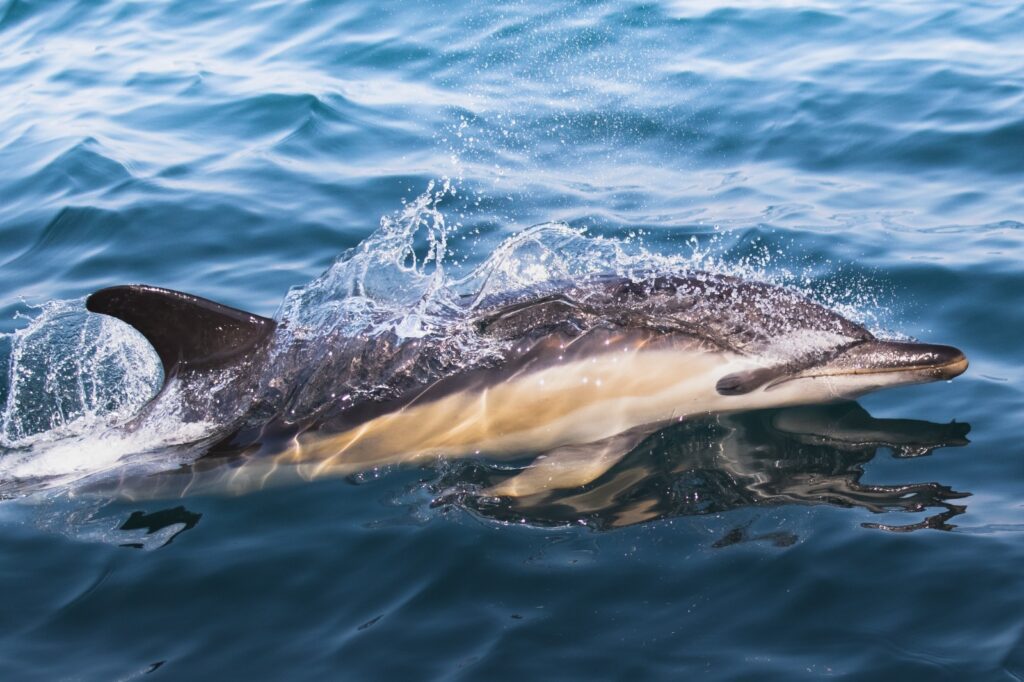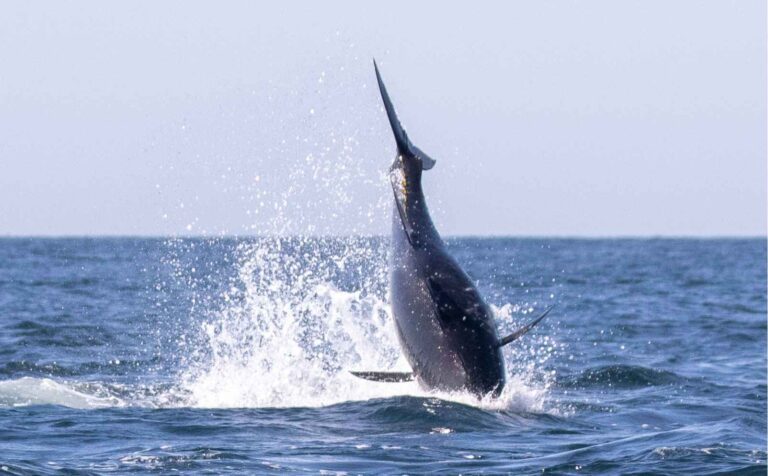At Coast Boat Trips, we are truly blessed with some of the best wildlife watching in the UK. Our standards are sky high as we’ve been spoilt with so many days with seals, porpoise, tuna and dolphins in Cornwall. Throw in a few whales and a whole host of incredible seabirds, and you start to see why we love what we do so much. Among the wildlife community, it’s no secret that West Cornwall is home to the most diverse and abundant marine life in England. But what makes it so special?
Land’s End is a good place to start. The nearby headland of Cape Cornwall is the only cape in England. Capes across the world are where multiple bodies of water come together, and the Atlantic Ocean, the English Channel, and the Celtic Sea all meet at this spot, creating what is known as a front. Fronts are incredible hotspots for marine life, as the ocean gets stirred up here, bringing deep water to the surface. Deep water is full of nutrients and oxygen, which are extremely important for phytoplankton (a bunch of tiny organisms that act like the plants of the ocean). And wherever you get plankton, you get fish, and with fish comes the big stuff!
We know first-hand how amazing these fronts at Land’s End can be. In spring, this is one of the best places to see Puffins, Basking Sharks, and the elusive Risso’s Dolphins in Cornwall. As the summer arrives, we find Common Dolphins and Harbour Porpoise feeding here all day long. And the true stars of the show in this spot are the Bluefin Tuna. We have one of the most incredible locations for tuna in the UK, where we see their 500kg bodies leaping out of the water almost every day from August onwards! To top it all off, the Longships Lighthouse is home to one of the biggest summertime Grey Seal colonies in Cornwall. We cannot express how much we love Land’s End and several of our trips revolve around this area. You can check out the cape for yourself on our Land’s End Experience, North Coast Explorer, and our award-winning Rounding Cornwall trips.
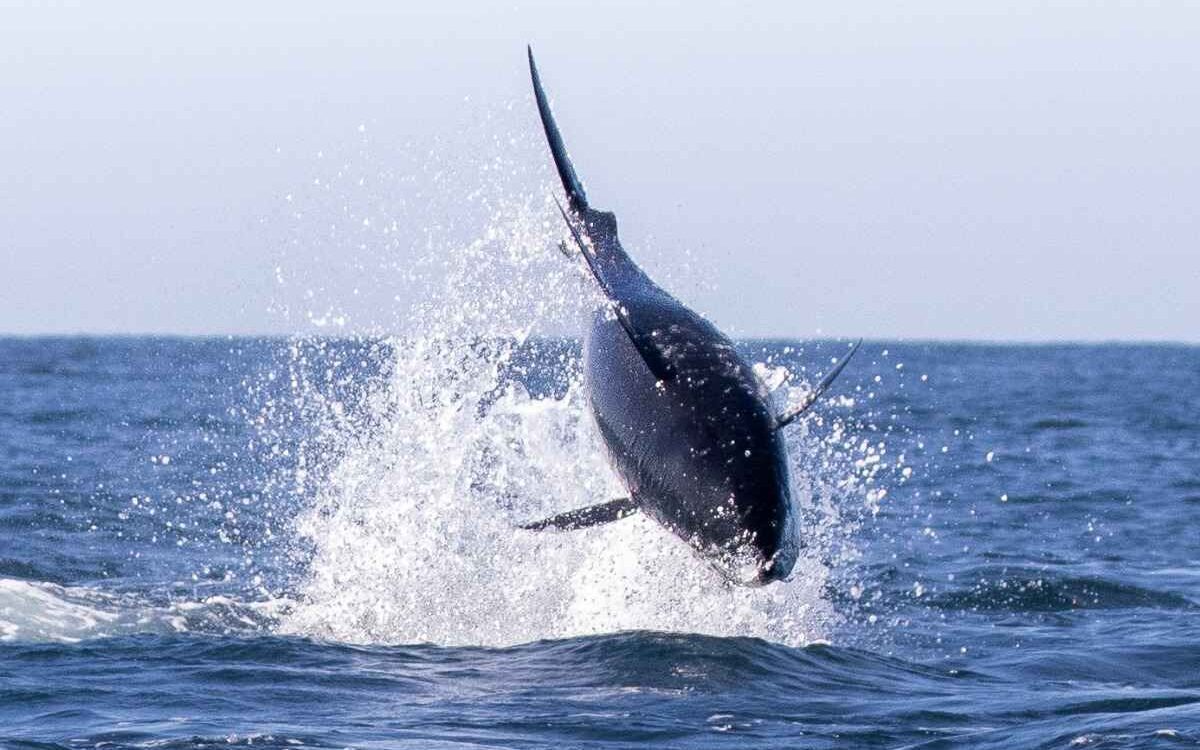
Photo taken by Josh Wilson @oshuwilson
The next secret ingredient to our Cornish wildlife paradise is the seafloor itself. The south coast of West Cornwall is littered with seamounts, which, just like the name suggests, are towering hills underneath the surface. As the currents are squished around these seamounts, deep water is once again pushed to the surface. And just like at Land’s End, this brings plankton, then fish, then our beloved marine mammals. These are particularly good areas for whales and dolphins, since they’re found further offshore and so are better suited to these animals’ lifestyles.
Since these seamounts are found mainly on the south coast, we explore them on our Mount’s Bay Discovery, Land’s End Experience, and Rounding Cornwall trips. One of these structures in Mounts Bay itself even has the wreck of a submarine on it after it crashed into the seamount. This is our favourite hotspot for Common Dolphins, and it seems to be where we find the most nursery pods full of little babies and youngsters jumping around. It doesn’t get much better than looking at baby dolphins in front of St Michael’s Mount! Our Mount’s Bay Discovery is also our most family-friendly trip so it’s great that even our little ones can see dolphins in these calmer waters. Further out in the bay, another mount is our go-to spot for Minke Whales. While we don’t see whales every day, when we get those super calm days, we’ll almost always go here to give it a shot. Excitingly, whales in Cornwall are on the up, with more seen last year than many can remember, so who knows how many we might get one day?
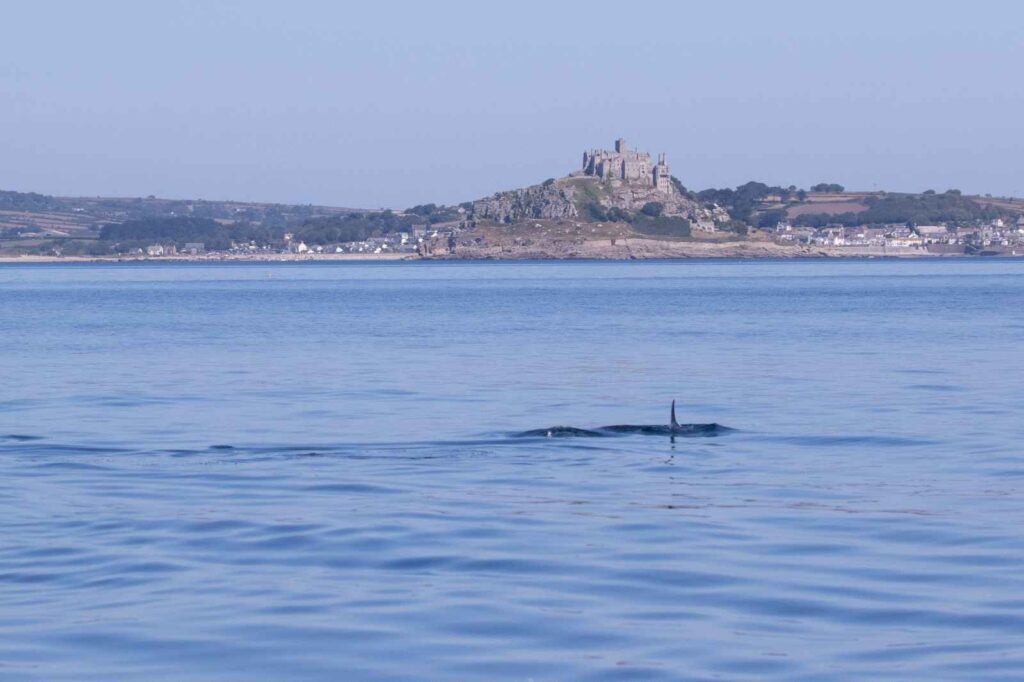
Photo taken by Josh Wilson @oshuwilson
The seas surrounding West Cornwall are generally quite deep for coastal waters, which is part of why we get so many dolphins here. But there are also some shallow reefs that can be equally jaw-dropping. And tidal currents are the driving force behind that magic. Cornish tides are some of the biggest in the world, dropping and rising by almost 7m during the biggest tides. And all this movement of water creates powerful currents that flood up and down our coast. In deep waters you won’t see much evidence of this, but at shallow reefs, the waves can build to giant heights as the water rushes over these rocks. If you find it hard to understand at first, think of river rapids, where the river becomes messy and bumpy at shallow sections. It’s the same in the ocean but with a lot more water. We call it a race, and these races are home to some of our favourite Cornish wildlife.
Harbour Porpoise are the real kings of the race. These underrated animals are essentially miniature dolphins, and we absolutely love them. It’s thought that the small fish these porpoise feed on struggle to swim properly when the currents are strong enough, making them easy pickings for our porpoise friends. It’s not only porpoise that can be found here, as dolphins often come to check out all the action, but during the summer we find porpoise in these areas almost every single day. The best thing about our races is that we have several of them in our area. Our favourite is the massive Runnelstone Race, overlooking the beautiful Porthcurno and the Minack Theatre. The North Coast also has a few races, with the biggest of all being found near the Botallack mines and St Ives. Even on our one-hour Godrevy to Hell’s Mouth boat trip, we pass through a small race where we’ve seen porpoise and dolphins. Beyond wildlife, races are super fun on our RIB rides, as we show our guests the thrill of surfing on those windier days!
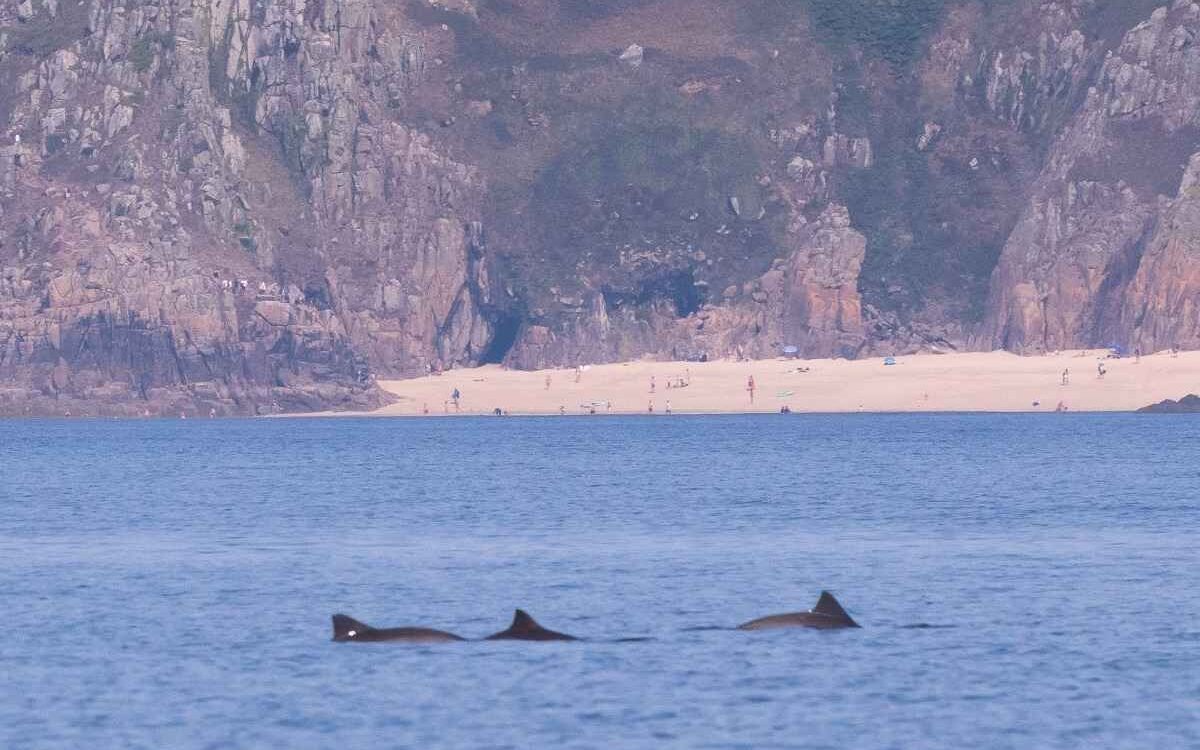
Photo taken by Josh Wilson @oshuwilson
The ocean isn’t the only thing that attracts our marine life. The stunningly beautiful cliffs and islands that litter our coasts also provide a home for our seals and seabirds. On the rare occasion when the dolphins don’t come out to play, we can always count on these animals to still provide you with one of Cornwall’s best days out. Grey Seals love to relax on the small rocky islands and outcrops around our shore all year round. We mentioned the huge colony at the Longships Lighthouse, but we also have smaller seal colonies near Mousehole and Godrevy during the summer, meaning we almost never go a trip without seeing these curious creatures. The rich food supply in our waters and the great level of protection they receive from groups like the Cornwall Seal Group Research Trust means that our seals can truly flourish here. We love getting to know all of their personalities and it puts a smile on our face when our guests get to see them dozing around and having a play.
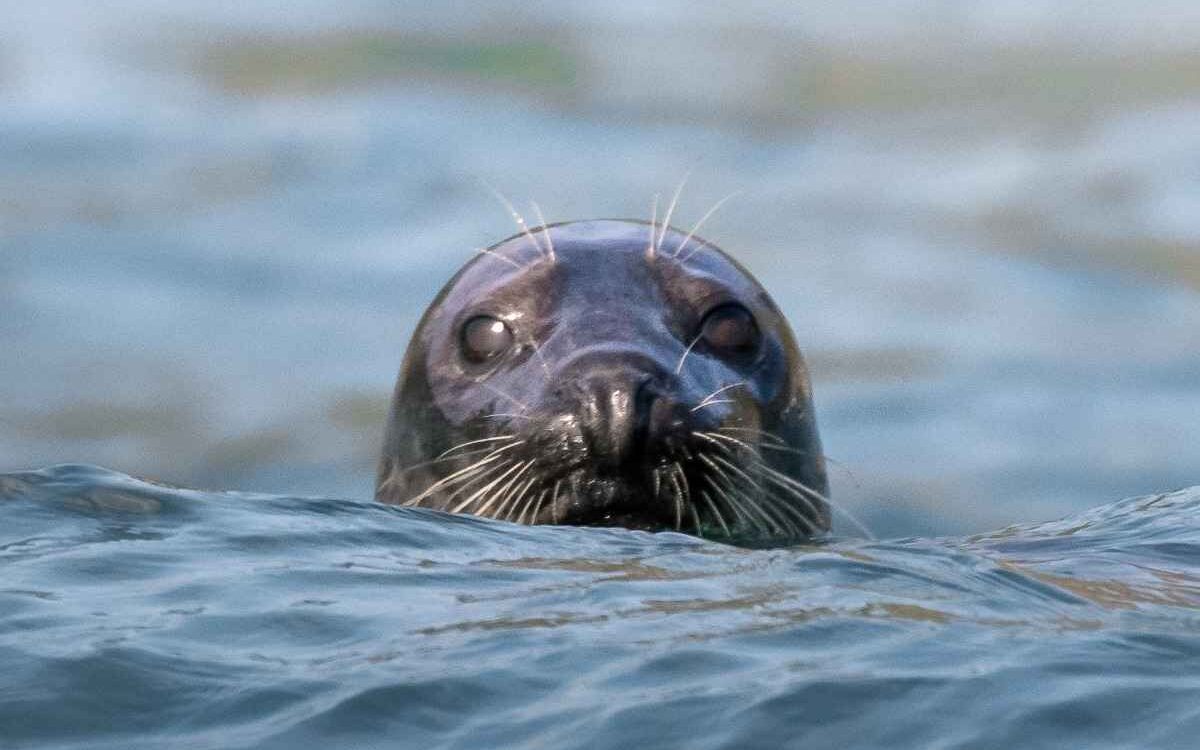
Photo taken by Josh Wilson @oshuwilson
Seabirds also love islands and towering cliffs as they can escape from egg-munching rats and mice here. Our personal favourites are the auk family, including Puffins, Guillemots, and Razorbills. Their stumpy wings and penguin-like appearance make them a real joy to watch, and in nesting season from April to July, we spend every day watching them squawk and flap around. Our biggest colony can be found right underneath Land’s End itself, but we’re lucky to have two more near Cape Cornwall and Godrevy as well. Only our Mounts Bay Discovery trip doesn’t visit an auk colony so book any other trip to see the Cornish penguins for yourself.
People from other countries often tell us they never knew just how many animals you could see in Britain. That’s why we’re so passionate about putting Cornwall on the map for marine life. There aren’t many places in Europe, or even the world, where you could see porpoise, seals, tuna, dolphins, and whales in a 2-hour boat ride. But in the summer, we really can see all that in one trip. Our hope is that by showing people just how diverse British wildlife is, we might inspire some of you to help us protect it. We dream of a future where our seas are restored to their former glory. In the past, Pilot Whales, Orca and Humpback Whales were all much more common sights here, and maybe one day they will be again. We know our coast can support them, and with the rise of the Bluefin Tuna and Minke Whales it is more than imaginable. But for now, we’re quite content with the wildlife we’re blessed with. And we want to bring you along to see it too!

Photo taken by Josh Wilson @oshuwilson


